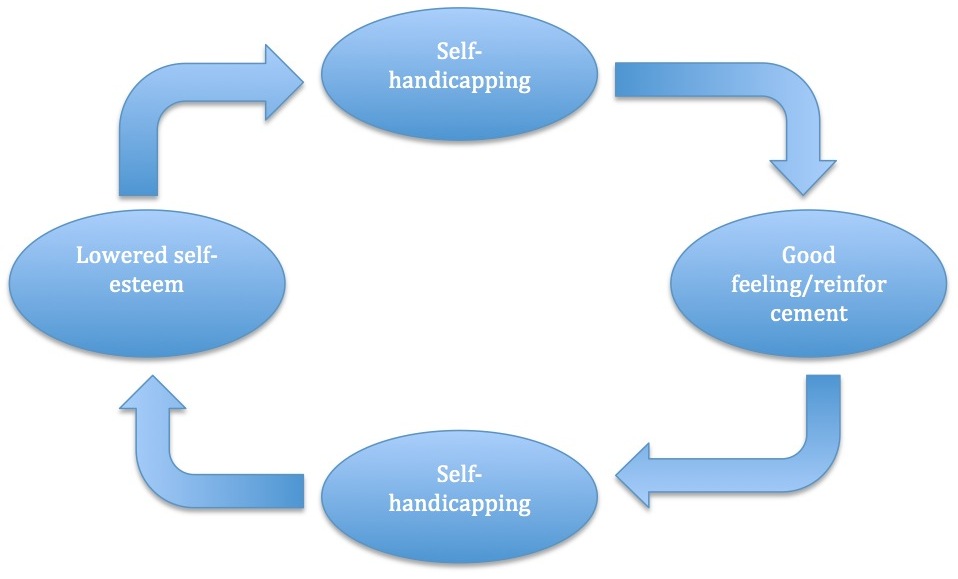Self-handicapping is a cognitive bias that occurs when individuals create obstacles or excuses to justify potential failure or poor performance in advance. This bias allows people to protect their self-esteem by attributing their failures to external factors rather than acknowledging a lack of effort or ability.
Explanations:
Self-handicapping is driven by the desire to maintain a positive self-image and avoid taking responsibility for one’s failures. By creating excuses or obstacles in advance, individuals can shield their self-esteem from the impact of potential failure.
Examples:
Academic Performance: A student may procrastinate on studying for an important exam, creating an excuse for potential failure by claiming they didn’t have enough time to prepare.
Sports Competitions: An athlete may party the night before a big game, using potential fatigue or alcohol consumption as an excuse for poor performance.
Job Interviews: A job candidate might not prepare adequately for an interview, using nervousness or a lack of information as a pre-made excuse for any perceived shortcomings during the interview.
Solutions:
Accountability: Promote personal accountability and responsibility for one’s efforts and outcomes, regardless of success or failure.
Effort and Preparation: Encourage individuals to put in the necessary effort and preparation to maximize their chances of success.
Growth Mindset: Develop a growth mindset that views failures as opportunities for learning and improvement, rather than threats to self-esteem.
Reducing Perfectionism: Address perfectionism and unrealistic expectations that can contribute to self-handicapping behaviors.
Addressing self-handicapping involves recognizing the tendency to create excuses or obstacles in advance of potential failure and actively promoting personal accountability and a growth mindset. By focusing on effort and preparation and viewing failures as learning opportunities, individuals can reduce the impact of this cognitive bias on their decision-making and performance.
